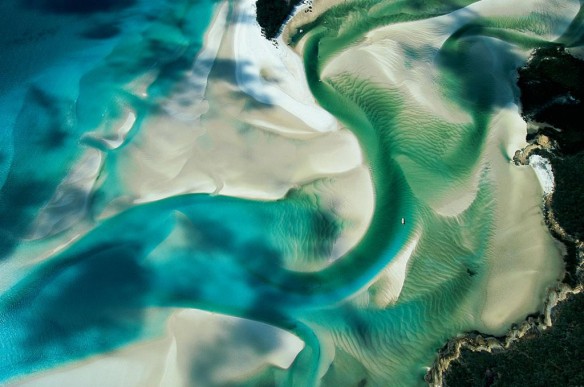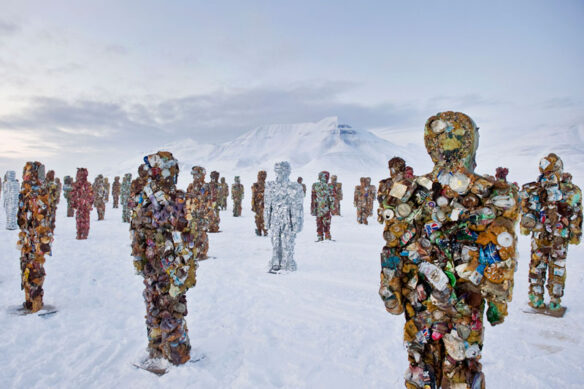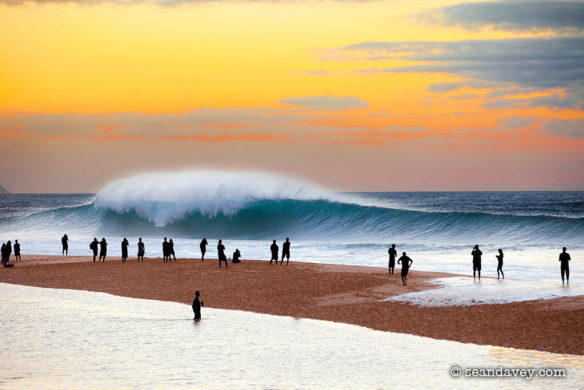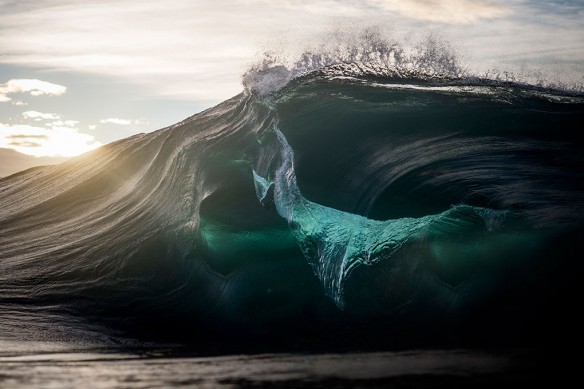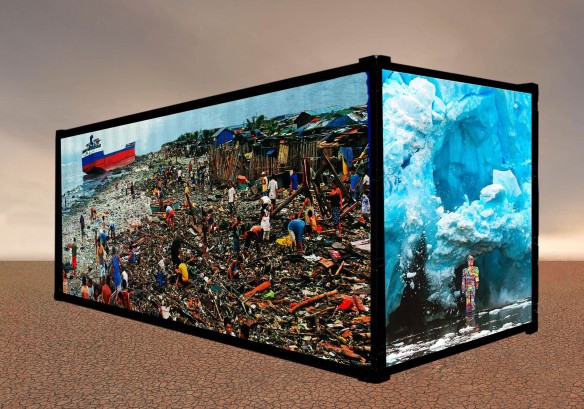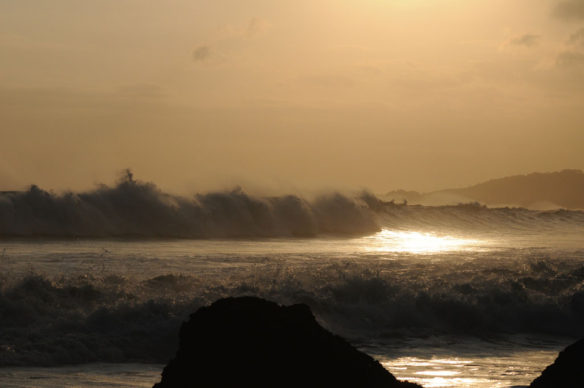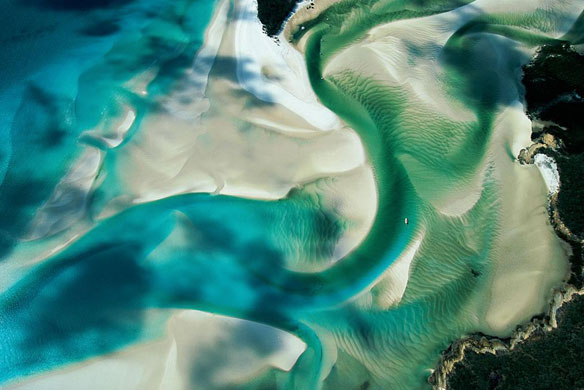
© “Banc de sable sur le littoral de l’Ile de Whitsunday, Queensland, Australie (20º 15″S – 149º 01’E).”
Photograph courtesy of Yann Arthus-Bertrand for Coastal Care.
All rights reserved Yann Arthus-Bertrand ©2011.
Whitsunday Island is one of the 74 islands of the Whitsunday Island group off the east coast of Australia. Named by the British navigator James Cook who discovered these islands in 1770, on Whit Sunday.
The 4.3 miles (7 kilometers) long beach of White Haven, fringed with mangroves, has sand of a rare quality: at 98 percent silica, it is said to be the purest in the world.
This site belongs to the marine park of the Great Barrier which welcomes every year about 2 millions visitors who come to admire the variety of its land and marine species. To protect them, a third of the park was classified as a “highly protected zone” by Australian authorities in 2004. In these zones, fishing is prohibited and tourism is regulated to have only a moderated impact on this very sensitive environment.
Born in 1946, Yann Arthus-Bertrand has always been fond of nature and animals.
At thirty years old, he settles in Kenya with his wife, Anne, to study the every day life of a pride of lions. The camera soon becomes necessary to relate his observations, and he understands that he has to tell the facts through images rather than words. Photography becomes his vocation.
Back to France in 1981, he publishes a book, « Lions », begins a career as a reporter-photographer and becomes specialized in aerial photography.
In 1994, under the patronage of UNESCO, he begins the creation of an aerial image bank of the most beautiful places on earth : this project will lead to the publication of The Earth from above.
He creates the GoodPlanet Foundation, a non-profit organization.


